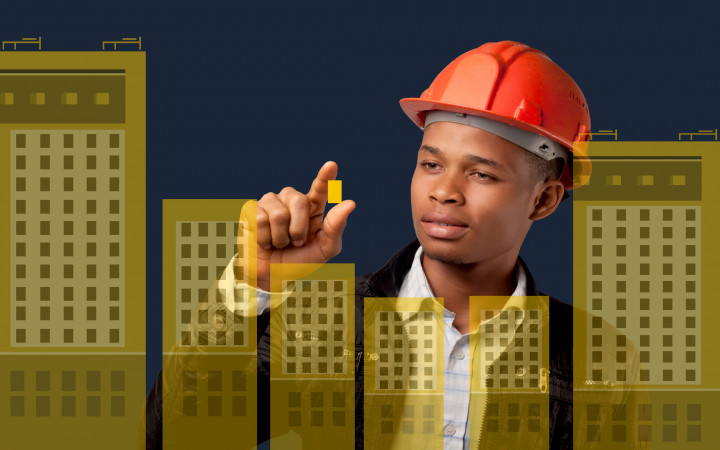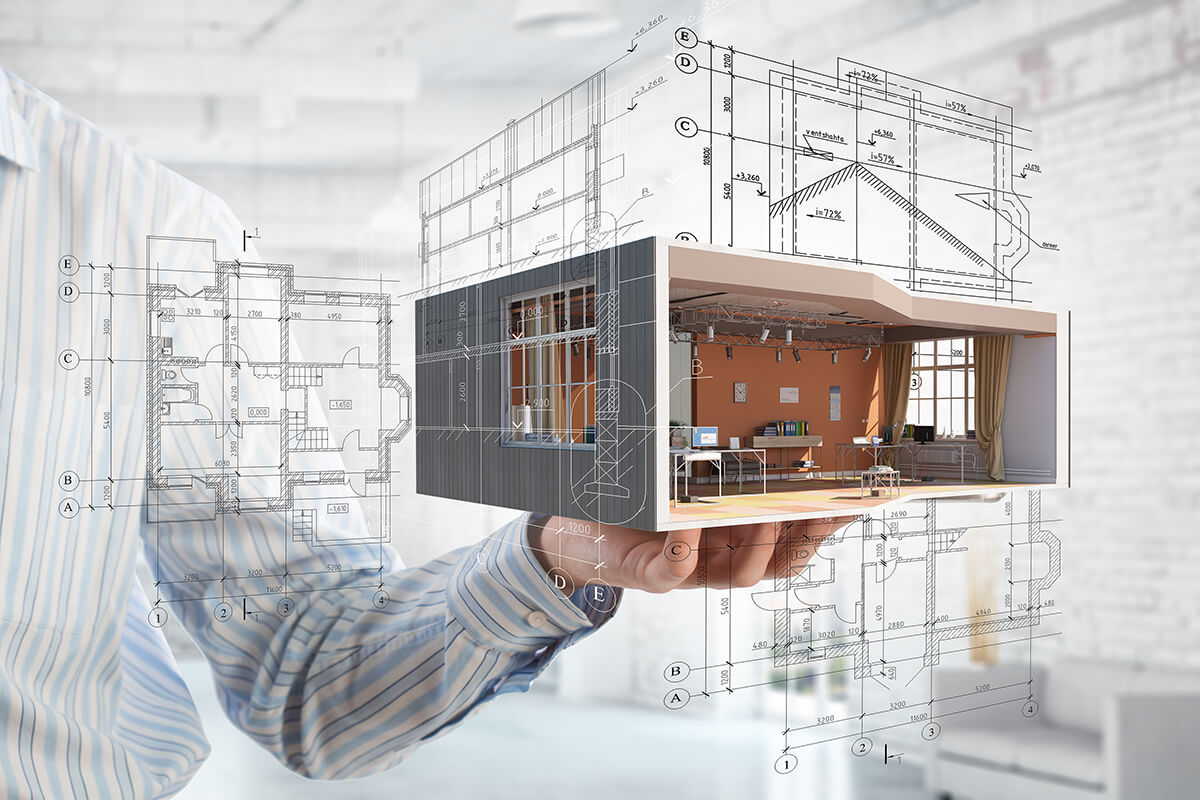Architect Design Styles to Follow in the Coming Future
Architect Design Styles to Follow in the Coming Future
Blog Article
The Duty of Sustainability and Innovation in Modern Architect Practices
Sustainability and modern technology are improving modern architecture in means you could not anticipate. By embracing smart developments and green materials, architects are not just producing buildings; they're crafting environments that boost our quality of life. This change isn't nearly visual appeals or performance; it has to do with establishing an accountable method to our world's future. What's driving this transformation, and how can these modifications influence your neighborhood?
The Importance of Lasting Design
Sustainable architecture is vital not simply for the environment but also for improving our top quality of life. When you embrace sustainable style, you're not just reducing your carbon footprint; you're creating spaces that advertise health and well-being.
In addition, sustainable architecture typically results in stronger areas. When structures are developed with environment-friendly techniques, they can influence others to adhere to fit, promoting a culture of sustainability. You'll observe increased residential property values and a better sense of satisfaction in your environments.
Finally, by focusing on sustainability, you're purchasing the future. You're guaranteeing that future generations enjoy a healthier earth and dynamic neighborhoods. When you consider your following task, think regarding how lasting architecture can raise your life and those around you.
Ingenious Materials Changing Structure Practices
As you explore innovative products in style, you'll find that eco-friendly construction products are reshaping exactly how we believe about sustainability. Recycled content advancements are giving brand-new life to waste, while clever product technologies enhance developing effectiveness. These improvements not just advertise eco-friendliness yet also press the borders of style.
Naturally Degradable Construction Materials
While conventional building materials typically contribute to ecological destruction, naturally degradable building and construction materials are arising as a sensible option that transforms building techniques. You can discover choices like mycelium, bamboo, and hempcrete, which not only minimize waste but additionally promote sustainability. These products damage down normally at the end of their lifecycle, minimizing landfill payments. By incorporating biodegradable options into your designs, you're not simply boosting aesthetic appeal; you're also making a favorable influence on the world. And also, they typically need much less energy to create, better decreasing your task's carbon footprint. As you adapt to these innovative materials, you'll discover that they use durability and adaptability, enabling you to produce structures that straighten with modern-day worths of sustainability and obligation.
Recycled Material Innovations
In current years, cutting-edge materials with high recycled content have actually reinvented structure methods, using engineers amazing new options - Architect. You can now include materials like recycled steel, which not only lowers waste but additionally boasts excellent toughness. Recycled glass is an additional amazing choice, supplying aesthetic charm while decreasing ecological influence

Smart Material Technologies
Smart material technologies are improving the method you consider building methods, supplying dynamic remedies that adapt to transforming problems. These innovative materials, such as self-healing concrete and thermochromic glass, improve building efficiency and sustainability. Imagine structures that can adapt to temperature level modifications or repair themselves when harmed-- these advancements are no more just concepts. By integrating clever products, you can develop energy-efficient designs that reply to their atmosphere, minimizing total power usage. The capability to adapt and keep track of in real-time streamlines upkeep and extends the lifespan of buildings. As you embrace these innovations, you're not just innovating; you're adding to a much more lasting future in style, merging performance with ecological duty.
The Combination of Smart Technologies in Style
As technology progresses, integrating smart options into architectural design ends up being crucial for producing effective and lasting areas. You can include wise modern technologies like constructing monitoring systems, which optimize power usage and improve occupant comfort. Sensors can monitor ecological conditions, adjusting lights and temperature level instantly based upon real-time information. This versatility not just boosts user experience but also lowers energy intake.
Incorporating Internet of Points (IoT) devices enables seamless communication amongst numerous structure systems, allowing you to make data-driven choices that enhance performance. Smart materials that react to ecological adjustments can better improve your design, providing dynamic options to ever-changing problems.
Power Efficiency and Renewable Resource Solutions
While many designers concentrate on appearances, focusing on energy efficiency and renewable resource options is vital for lasting layout. You can start by integrating easy solar design, which optimizes natural light and heat, reducing dependence on man-made lighting and heater. Make use of high-performance insulation and energy-efficient home windows to reduce power loss.
Don't ignore renewable power systems-- install solar panels or wind generators to generate clean energy on-site. You can likewise think about including geothermal home heating and cooling systems for an extra sustainable temperature level regulation.
By choosing energy-efficient appliances and illumination, you'll not only minimize power usage yet also reduced functional costs for building residents.
Integrating these principles into your styles not only profits the setting yet likewise enhances the building's allure and value. Inevitably, your dedication to power effectiveness and renewable energy will certainly set your jobs apart in an affordable market.
Water Preservation Strategies in Modern Architecture
Integrating water preservation approaches right into modern style is important for developing lasting structures that lessen environmental impact. You can attain this by integrating rain harvesting systems, which gather and store rain for irrigation and non-potable uses. Carrying out low-flow components and smart irrigation systems likewise decreases water intake, making sure efficient use throughout the structure.
Consider making use of drought-resistant landscaping, which needs less water and advertises biodiversity. Including absorptive paving products allows rainwater to infiltrate the ground, reducing drainage and recharging groundwater materials.
Additionally, setting up greywater recycling systems can repurpose water from sinks and showers for toilet flushing or watering, further saving resources.
The Effect of Biophilic Style on Wellness
Biophilic design brings nature inside your home, and you'll observe its positive results on your wellness and happiness. By improving indoor air top quality and attaching you with natural aspects, these areas can change your everyday experience. Let's discover just how integrating these functions can enhance your general health.
Nature's Influence on Health and wellness
When you incorporate aspects of nature into your environments, it can greatly improve your physical and psychological health. Biophilic layout, which emphasizes natural light, plants, and organic products, promotes a sense of link to the outdoors. Welcoming biophilic design is a step toward a much healthier lifestyle.
Enhancing Indoor Air High Quality
While lots of people focus on appearances and capability in style, boosting indoor air high quality plays an essential role in your overall well-being. Poor air top quality can cause health problems like headaches, tiredness, and respiratory system problems. By including biophilic layout aspects, you can boost air high quality naturally. Plants, as an example, not just beautify your room however likewise filter toxins and boost oxygen levels. Making use of products with low volatile natural substances (VOCs) better contributes to a much healthier interior atmosphere. Additionally, optimizing all-natural ventilation helps in reducing indoor pollutants. Focusing on these facets in your design will certainly not just raise your space however likewise advertise a sense of calm and well-being. Ultimately, a concentrate on air top quality is essential for a lasting and healthy living setting.
Link With Natural Environments
When you attach with natural environments in your room, you not just boost its aesthetic charm yet likewise greatly enhance your health. Biophilic design encourages you to incorporate attributes like plants, all-natural light, and organic products. These aspects produce a calming atmosphere, minimizing tension and stress and anxiety. Research reveals that being around nature can enhance your state of mind and cognitive function, assisting you really feel much more focused and effective. When you invite the outdoors inside, you might see better air high quality and enhanced convenience. Simple modifications, like including a living wall or big windows, can exceptionally influence your experience (Architect). Eventually, integrating nature right into your setting leads you to a healthier, better way of living, cultivating a click here deeper connection to the world around you.
Future Fads in Lasting Building Practices
As the globe encounters pressing environmental challenges, engineers are increasingly embracing innovative techniques to sustainability that redefine how we design read more and construct. You'll see a rise in biophilic style, integrating nature right into city spaces to improve wellness and decrease power usage. Smart modern technologies, like AI and IoT, are enhancing energy administration in structures, maximizing resource usage, and reducing waste.
Additionally, modular building is acquiring traction, allowing for quicker, extra effective structure processes while reducing environmental influence. Making use of sustainable materials, such as redeemed wood and recycled steels, is becoming typical practice. As you explore these fads, anticipate a shift toward circular layout, emphasizing the lifecycle of materials and promoting reuse and recycling.
These forward-thinking techniques not just address ecological issues however additionally develop healthier, more resistant areas. By remaining informed about these trends, you can aid shape a sustainable future in design.
Often Asked Inquiries
Just How Can Sustainability Affect Project Costs and Spending Plans?
Sustainability can significantly affect project costs and spending plans. You might find that initial investments in eco-friendly materials or innovations bring about long-lasting cost savings via power effectiveness, reduced waste, and prospective federal government incentives, ultimately stabilizing the general expenditures.
What Accreditations Exist for Lasting Design?
You'll find a number of certifications for lasting architecture, including LEED, BREEAM, and the Living Building Difficulty. These qualifications help you demonstrate your dedication to sustainability and can improve your task's trustworthiness and interest clients.
Exactly How Does Regional Culture Impact Lasting Style?
Local society shapes sustainable style by showing neighborhood customs, materials, and values. You'll discover that incorporating local aesthetics and techniques not only respects heritage yet likewise boosts the performance and acceptance of your building jobs.
What Role Does Customer Education And Learning Play in Lasting Practices?
Customer education and learning's important for advertising lasting practices. When you inform clients concerning advantages, prices, and environmental influences, you equip them to make enlightened choices, cultivating a joint strategy that improves the task's total sustainability.

Just How Can Architects Gauge the Success of Sustainability Campaigns?
You can gauge the success of sustainability campaigns by tracking power consumption, assessing material efficiency, and event responses from clients. Regular audits and comparisons versus criteria will help you improve your methods and showcase improvements effectively.
By integrating wise products, you can create energy-efficient layouts that react to their atmosphere, reducing general energy intake.While numerous designers concentrate on click here visual appeals, prioritizing power performance and renewable energy solutions is crucial for sustainable design. Biophilic layout, which emphasizes natural light, plants, and natural materials, cultivates a sense of link to the outdoors. Biophilic style urges you to incorporate features like plants, natural light, and organic products. As you explore these trends, expect a change toward round design, stressing the lifecycle of products and advertising reuse and recycling.
Report this page